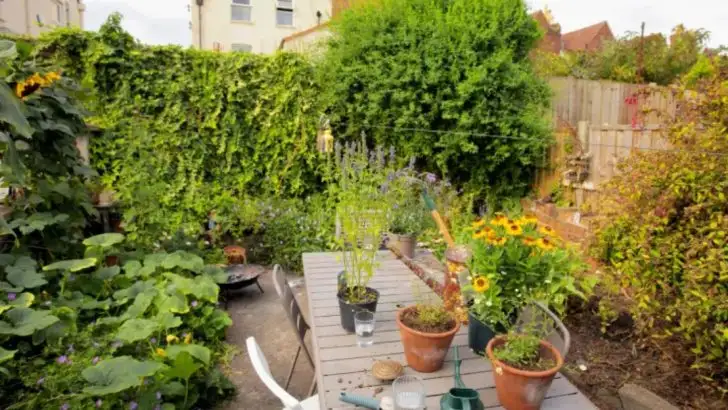Modern life often pulls us away from nature — but even small design choices in your garden can help you reconnect. Drawing from the principles of forest therapy (also known as shinrin-yoku or “forest bathing”), you can create a space that supports calm, clarity, and emotional balance.
In this article, we share 13 garden design tips rooted in forest therapy, from using natural materials and layered planting to embracing stillness, scent, and sound. These ideas go beyond beauty — they’re designed to soothe the nervous system and bring you into the present moment.
Create a garden that’s more than a visual escape — make it your personal source of peace and healing.
Create a Meandering Path
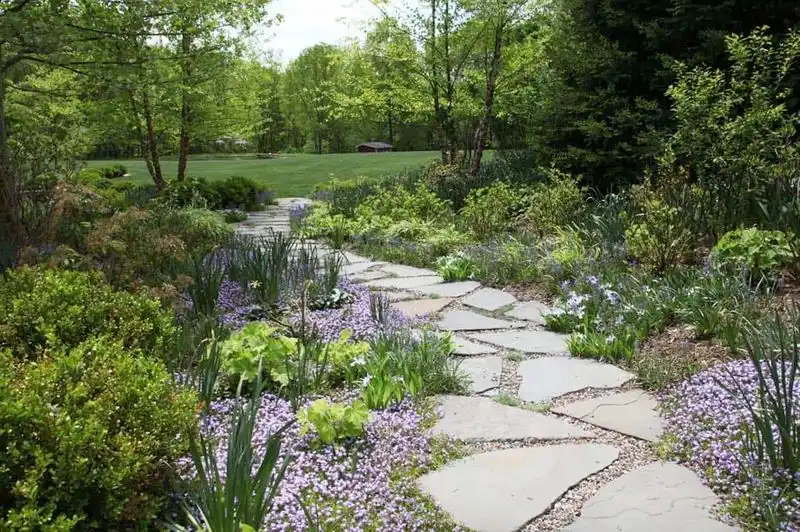
Imagine a gentle stroll through your garden, with each step revealing a new vista. A meandering path helps you slow down and appreciate the journey. Curved paths mimic natural trails found in forests, providing a sense of exploration and discovery. Use materials like gravel, wood chips, or stone to create texture underfoot.
Interspersing the path with plants of different heights and textures can enhance the sense of discovery. The gentle curves guide your eyes and feet, allowing you to take in the changing scenery at a leisurely pace.
Incorporate Water Elements
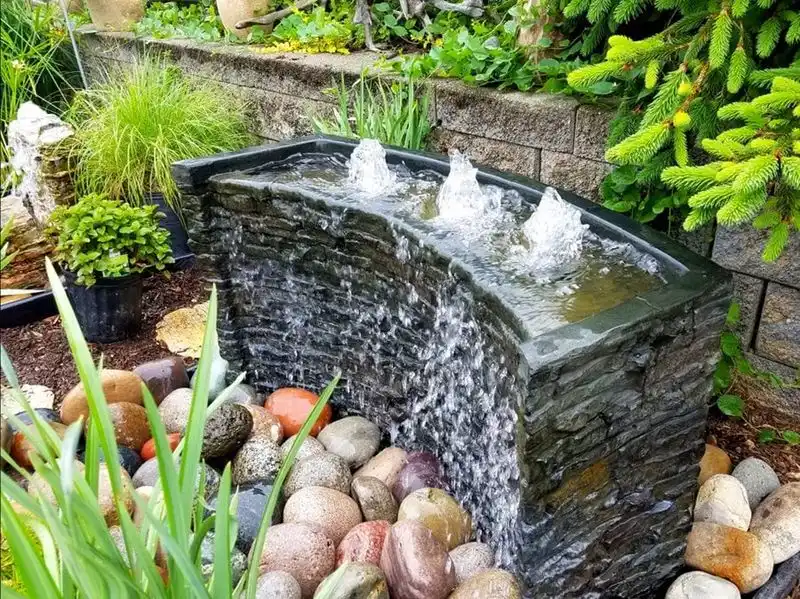
The serene sound of water trickling over rocks is a soothing balm for a weary mind. Incorporating a water element, such as a pond or small waterfall, can transform your garden into a meditative space. The presence of water attracts wildlife, adding another dimension of life and movement.
Consider the reflective qualities of water, which can create a sense of space and light. Watching water ripple and flow encourages a state of mindfulness, helping to clear mental clutter and promote relaxation.
Plant for Seasonal Interest
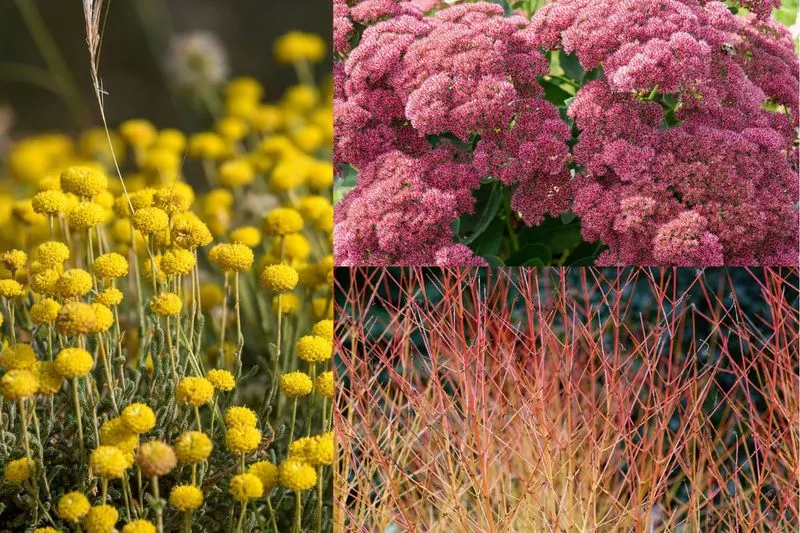
Nature’s calendar offers a dynamic backdrop that shifts with each season. By planting for seasonal interest, your garden becomes an ever-evolving canvas. Spring blossoms, summer greens, autumn colors, and winter structures contribute to a lively and engaging environment.
Choose a variety of plants that offer different visual and sensory experiences throughout the year. This approach keeps your garden interesting and engaging, regardless of the season, inviting you to appreciate the subtle changes that mark the passage of time.
Add Aromatic Plants

The sense of smell can evoke powerful memories and emotions. Including aromatic plants like lavender, rosemary, or thyme in your garden invites you to engage with your surroundings in a sensory-rich way. These scents can trigger relaxation and nostalgia, offering comfort and peace.
Position these plants near pathways or seating areas, where their fragrance can be easily enjoyed. As the breeze wafts their scent, each breath becomes a gentle reminder of nature’s ability to heal the mind and body.
Create Private Nooks
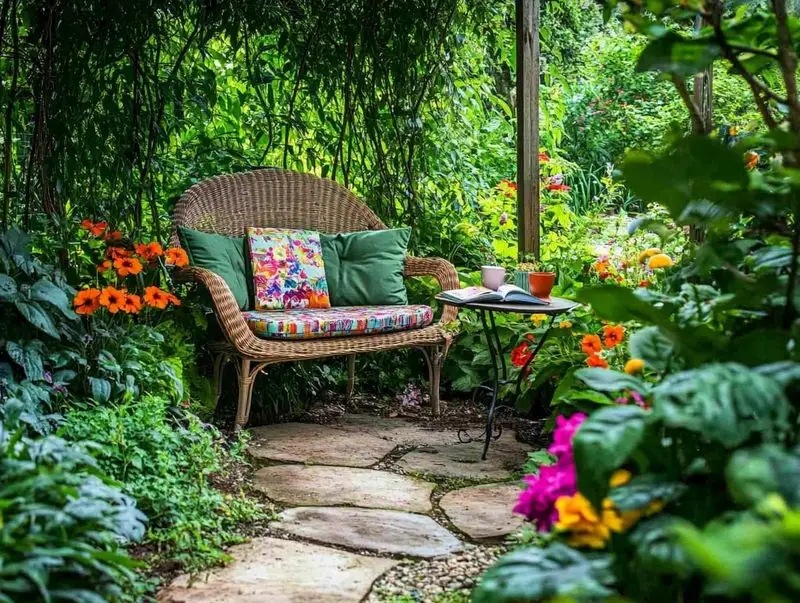
Everyone needs a quiet place to retreat. Creating private nooks in your garden offers a personal sanctuary for reflection and relaxation. Use tall plants or garden screens to carve out intimate spaces where you can sit and unwind.
A strategically placed bench or chair invites you to pause and enjoy the moment. These secluded areas can become your personal escape, where the outside world fades away, and peace prevails.
Use Natural Materials
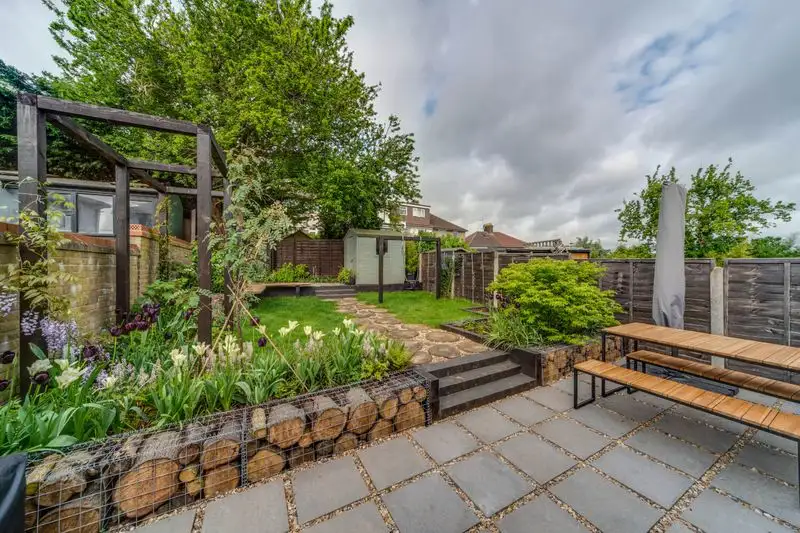
Natural materials have a grounding effect, connecting us to the earth. Using wood, stone, or clay in your garden design brings an organic feel to the space. These materials age gracefully, blending seamlessly with nature over time.
Incorporate them in pathways, seating, or structures like pergolas. The tactile and visual warmth of natural materials offers comfort, inviting you to touch and explore, making the garden feel like an extension of the natural world.
Introduce Wildlife-Friendly Features
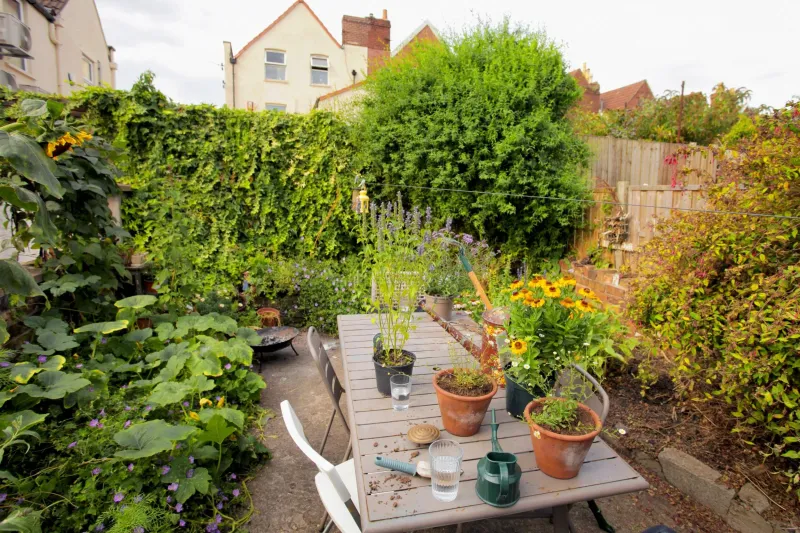
A garden teeming with life is a joyful place. By introducing wildlife-friendly features, you invite an array of creatures into your garden ecosystem. Bird feeders, bee hotels, and butterfly bushes are some elements that encourage biodiversity.
Observing these visitors can provide endless fascination and a sense of harmony with nature. Each flutter and chirp is a reminder of the interconnectedness of life, enhancing the garden’s vitality and your connection to the natural world.
Enhance with Garden Art
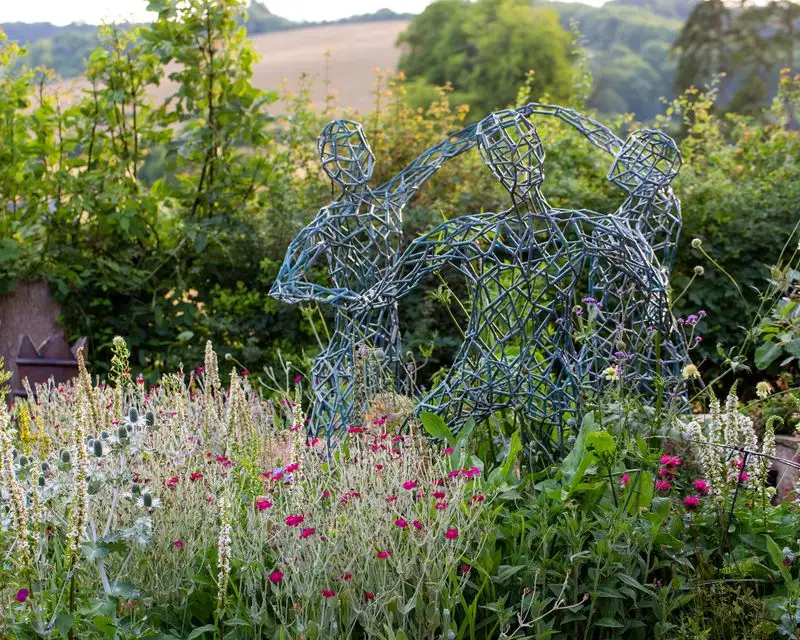
Art in the garden adds a layer of creativity and personal expression. Sculptures, mosaics, or wind chimes can complement the natural beauty, offering visual interest and surprise. Art pieces can serve as focal points, drawing the eye and encouraging exploration.
Choose pieces that resonate with your personality and the garden’s theme. As you wander through, these artistic elements can inspire reflection and a deeper appreciation for your surroundings.
Install Outdoor Lighting
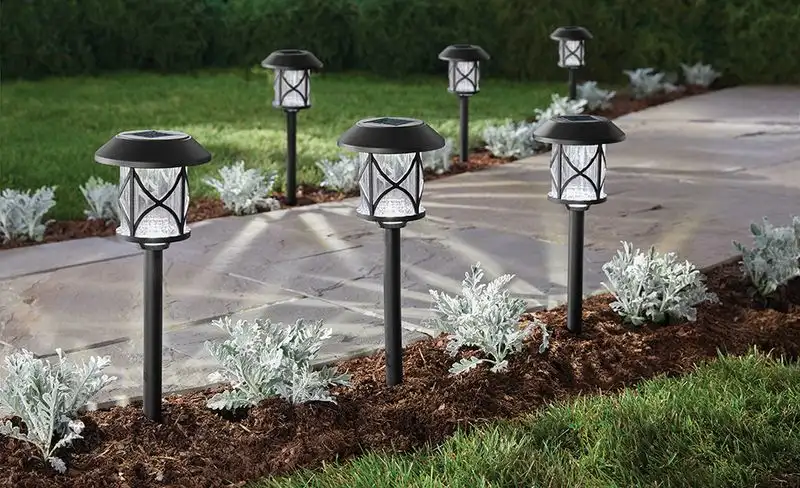
As the sun sets, a well-lit garden transforms into a magical space. Outdoor lighting enhances safety while allowing you to enjoy the garden’s beauty after dark. Use subtle lighting to highlight paths, plants, and water features.
Solar or LED lights can offer eco-friendly options, casting a gentle glow that mimics moonlight. The play of light and shadow creates an enchanting atmosphere, perfect for evening reflection or gatherings.
Cultivate a Diversity of Textures
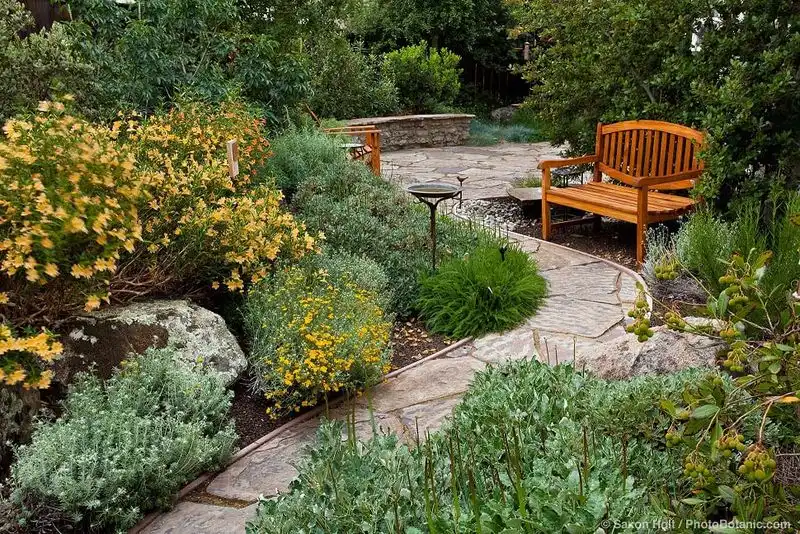
Texture adds depth and dimension to a garden, engaging the senses in subtle ways. Cultivating a diversity of textures, from feathery grasses to broad leaves, creates a rich tapestry of touchable beauty. These textural contrasts invite exploration and interaction.
The interplay of different surfaces and forms can evoke a sense of wonder, making the garden a tactile experience. This sensory engagement can lift your mood and deepen your connection to the space.
Designate a Meditation Spot
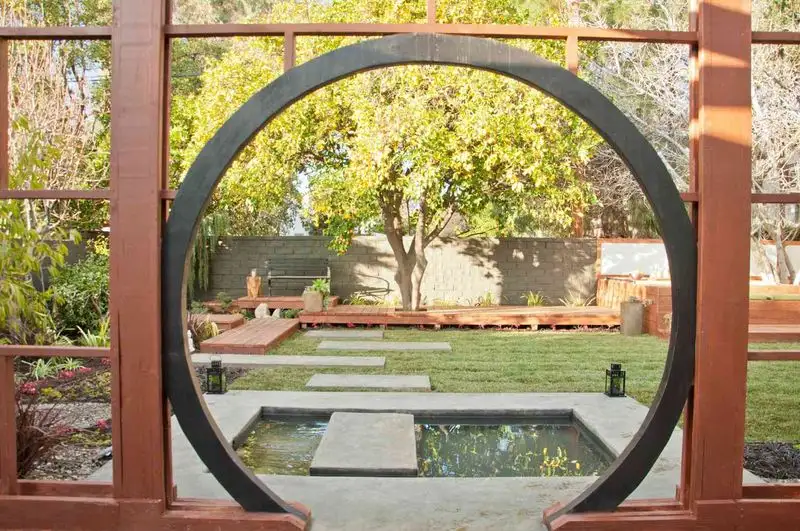
Designating a spot for meditation can turn your garden into a retreat for mindfulness. Choose a quiet corner with a calming view, and add a comfortable seat or mat. This space should invite solitude and contemplation.
Encouraging regular visits to this spot can help create a habit of relaxation and introspection. The garden’s natural ambiance enhances the meditative experience, providing a backdrop of peace and tranquility.
Use Color Strategically

Color can influence mood and perception. Using color strategically in your garden design can create desired emotional responses. Bright colors like reds and yellows energize, while blues and greens soothe.
Consider the balance and contrast of colors to ensure a harmonious flow. Planting in clusters can enhance visual impact, drawing attention to specific areas and creating a sense of excitement or calm depending on the palette.
Incorporate Edible Plants
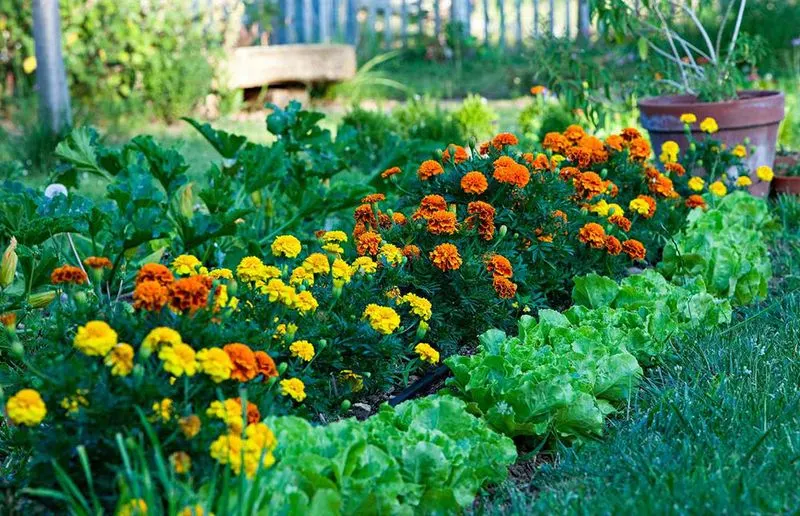
Edible plants offer both beauty and utility, transforming your garden into a source of nourishment. Integrating herbs, vegetables, and fruit trees can enhance the garden’s appeal while providing fresh produce. The act of growing your own food creates a rewarding connection to nature.
Tending to these plants can be a meditative activity, fostering patience and care. As you harvest and enjoy the fruits of your labor, the garden becomes a celebration of nature’s bounty and your efforts.

